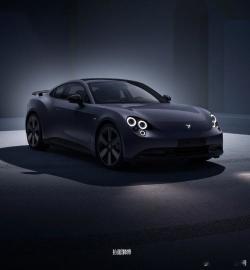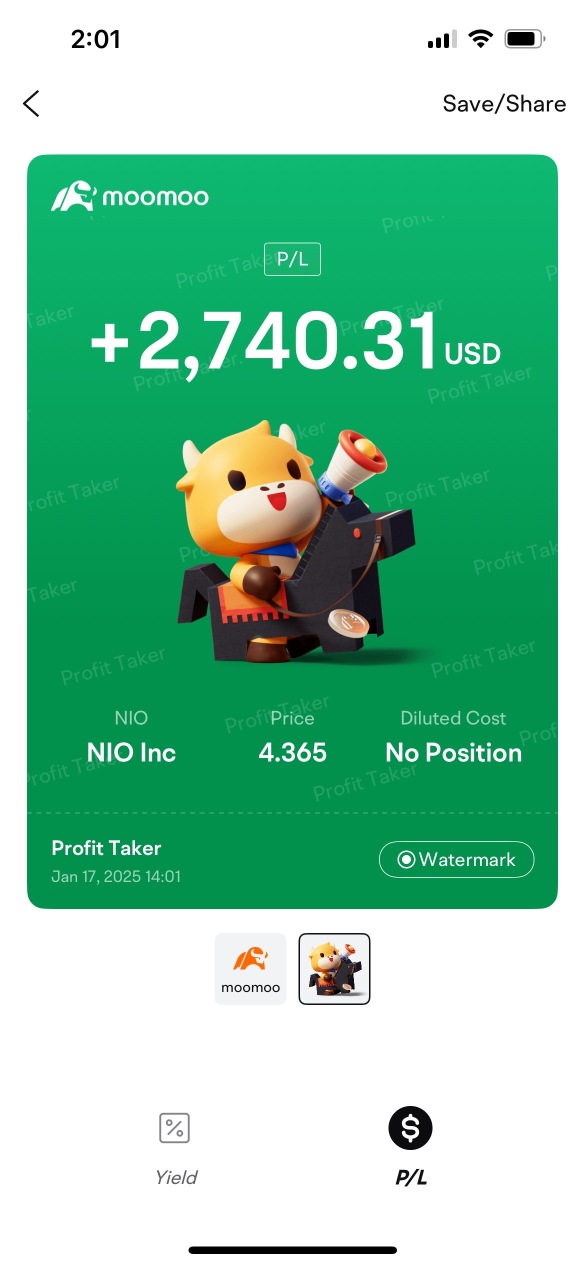US OptionsDetailed Quotes
NIO250103C6500
- 0.01
- 0.000.00%
15min DelayClose Jan 3 16:00 ET
0.00High0.00Low
0.00Open0.01Pre Close0 Volume2.87K Open Interest6.50Strike Price0.00Turnover0.00%IV49.31%PremiumJan 3, 2025Expiry Date0.00Intrinsic Value100Multiplier-16DDays to Expiry0.01Extrinsic Value100Contract SizeAmericanOptions Type--Delta--Gamma436.00Leverage Ratio--Theta--Rho--Eff Leverage--Vega
NIO Inc Stock Discussion
How many here would like to see if Xiaomi and Nio can merge to become a bigger player in order to survive in the EV industry.
1
4
After BYD now Xiaomi news. Nio is not for sales? If Xiaomi and Nio can merge then the potential will be greater.![]()
*
NIO's Ma Lin responded to the speculation of "Xiaomi acquiring NIO": purely fictitious.
*
NIO's Ma Lin responded to the speculation of "Xiaomi acquiring NIO": purely fictitious.
1
9
$NIO Inc (NIO.US)$
This chart show in Dec 2024 where are the top cities that sold the most NIO.
Most NIO long will know no 1 is Shanghai and no 2 is Anhui.
Now think, what is the upside potential of sales. This serve as a benchmark for the rest of 18 cities. On the flip side if these 20 cities have similar sales level as of today will means we have reach our limit.
This chart show in Dec 2024 where are the top cities that sold the most NIO.
Most NIO long will know no 1 is Shanghai and no 2 is Anhui.
Now think, what is the upside potential of sales. This serve as a benchmark for the rest of 18 cities. On the flip side if these 20 cities have similar sales level as of today will means we have reach our limit.

2
2

4
$NIO Inc (NIO.US)$Nio Launches Vehicle API in Europe to Enable Third-Party Integration - EV
1
Shorties shorting since the last 4 days ago ended up failure as Nio turned green for the 4th day. Not every short also can make money and now they are more angry as they are losing back their hard earned money as the Nio Warriors attacking them left right centre after the Bear failed to capture the 4.00 new level they wanted the most in order to march towards their dream level 3.00. Next week see whether the Bull still can continue marching towards the middle ground level or not. Bull needs to g...
4
1
$NIO Inc (NIO.US)$ If Stock prices are up on the very last day Trump starts his presidency. Guess next tue market trend.
2
$NIO Inc (NIO.US)$
Have a happy weekend and Good Luck To All💰💰💰
Have a happy weekend and Good Luck To All💰💰💰


9
6
No comment yet





 wish you all the luck in the future
wish you all the luck in the future 

bullbearnme : i think Xiaomi wont do that
Dragon Fish OP bullbearnme : Why not? Xiaomi EV is still loss making in 2025. Xiaomi target 300k EV in 2025 will not breakeven yet. Still loss making. If combined with Nio sales and removing the redundancy enjoying the economical of scale will bring down the production cost. As Xiaomi will start to design the new model with a swap battery to suit Nio Power swap station configuration then Nio power will easily be profitable in 2026 too. Win-Win for Nio too as cash strap Nio will have another giant company like Xiaomi as a backer. Nio won't be bankrupt for sure and become one of the 5 dragons in the China EV industry with Nio-Xiaomi new entity.![undefined [undefined]](https://static.moomoo.com/nnq/emoji/static/image/default/default-black.png?imageMogr2/thumbnail/36x36)
151872513 : why would NIO merge with xiaomi? what does xiaomi have to offer NIO? if NIO wanted to merge with another company, they would have better targets such as BYD. with the amount of sales BYD has it would accelerate the swap technology. Even CATL would be a better merge target than xiaomi, they can atleast standardise swap technologym
Dragon Fish OP 151872513 : Xiaomi at least is a profitable company can burn more money than Nio. BYD not interested on Nio as Nio is too small player compared to BYD.
![undefined [undefined]](https://static.moomoo.com/nnq/emoji/static/image/default/default-black.png?imageMogr2/thumbnail/36x36) In 2024, BYD significantly outperformed Nio in vehicle sales. BYD sold 4.3 million vehicles, while Nio delivered 221,970 vehicles. This means BYD sold approximately 4,078,030 more vehicles than Nio during the year.
In 2024, BYD significantly outperformed Nio in vehicle sales. BYD sold 4.3 million vehicles, while Nio delivered 221,970 vehicles. This means BYD sold approximately 4,078,030 more vehicles than Nio during the year. ![undefined [undefined]](https://static.moomoo.com/nnq/emoji/static/image/default/default-black.png?imageMogr2/thumbnail/36x36)
![undefined [undefined]](https://static.moomoo.com/nnq/emoji/static/image/default/default-black.png?imageMogr2/thumbnail/36x36)
![undefined [undefined]](https://static.moomoo.com/nnq/emoji/static/image/default/default-black.png?imageMogr2/thumbnail/36x36)
+
In December 2024 alone, BYD sold 514,809 vehicles, whereas Nio sold 31,138 vehicles, resulting in BYD selling 483,671 more vehicles than Nio that month.
In terms of market share, in 2023, BYD held a 35% share of China's new energy vehicle (NEV) market, while Nio held a 2.1% share.